Mohammad Hashemi
From Points to Places: Towards Human Mobility-Driven Spatiotemporal Foundation Models via Understanding Places
Jun 17, 2025Abstract:Capturing human mobility is essential for modeling how people interact with and move through physical spaces, reflecting social behavior, access to resources, and dynamic spatial patterns. To support scalable and transferable analysis across diverse geographies and contexts, there is a need for a generalizable foundation model for spatiotemporal data. While foundation models have transformed language and vision, they remain limited in handling the unique challenges posed by the spatial, temporal, and semantic complexity of mobility data. This vision paper advocates for a new class of spatial foundation models that integrate geolocation semantics with human mobility across multiple scales. Central to our vision is a shift from modeling discrete points of interest to understanding places: dynamic, context-rich regions shaped by human behavior and mobility that may comprise many places of interest. We identify key gaps in adaptability, scalability, and multi-granular reasoning, and propose research directions focused on modeling places and enabling efficient learning. Our goal is to guide the development of scalable, context-aware models for next-generation geospatial intelligence. These models unlock powerful applications ranging from personalized place discovery and logistics optimization to urban planning, ultimately enabling smarter and more responsive spatial decision-making.
Scalable Graph Condensation with Evolving Capabilities
Feb 24, 2025

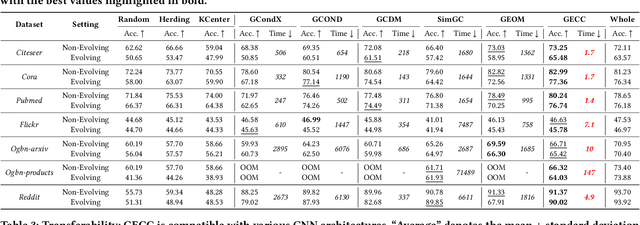
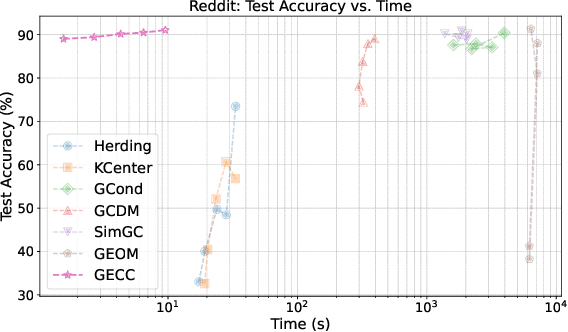
Abstract:Graph data has become a pivotal modality due to its unique ability to model relational datasets. However, real-world graph data continues to grow exponentially, resulting in a quadratic increase in the complexity of most graph algorithms as graph sizes expand. Although graph condensation (GC) methods have been proposed to address these scalability issues, existing approaches often treat the training set as static, overlooking the evolving nature of real-world graph data. This limitation leads to inefficiencies when condensing growing training sets. In this paper, we introduce GECC (Graph Evolving Clustering Condensation), a scalable graph condensation method designed to handle large-scale and evolving graph data. GECC employs a traceable and efficient approach by performing class-wise clustering on aggregated features. Furthermore, it can inherits previous condensation results as clustering centroids when the condensed graph expands, thereby attaining an evolving capability. This methodology is supported by robust theoretical foundations and demonstrates superior empirical performance. Comprehensive experiments show that GECC achieves better performance than most state-of-the-art graph condensation methods while delivering an around 1,000x speedup on large datasets.
A Comprehensive Survey on Graph Reduction: Sparsification, Coarsening, and Condensation
Feb 07, 2024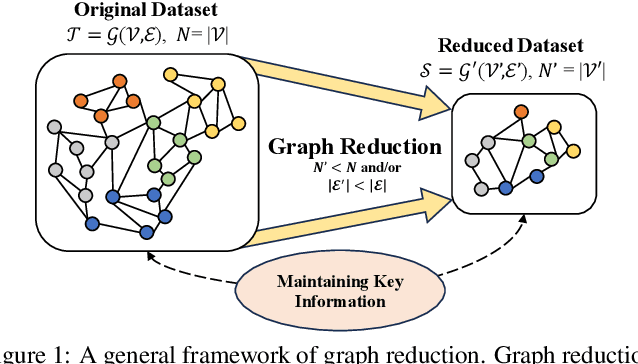
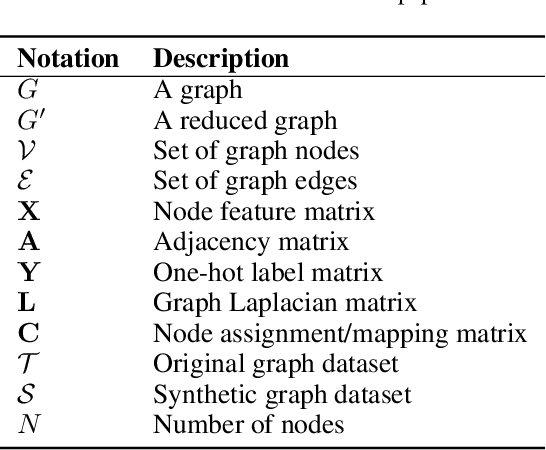


Abstract:Many real-world datasets can be naturally represented as graphs, spanning a wide range of domains. However, the increasing complexity and size of graph datasets present significant challenges for analysis and computation. In response, graph reduction techniques have gained prominence for simplifying large graphs while preserving essential properties. In this survey, we aim to provide a comprehensive understanding of graph reduction methods, including graph sparsification, graph coarsening, and graph condensation. Specifically, we establish a unified definition for these methods and introduce a hierarchical taxonomy to categorize the challenges they address. Our survey then systematically reviews the technical details of these methods and emphasizes their practical applications across diverse scenarios. Furthermore, we outline critical research directions to ensure the continued effectiveness of graph reduction techniques, as well as provide a comprehensive paper list at https://github.com/ChandlerBang/awesome-graph-reduction. We hope this survey will bridge literature gaps and propel the advancement of this promising field.
Fully Automated Assessment of Cardiac Coverage in Cine Cardiovascular Magnetic Resonance Images using an Explainable Deep Visual Salient Region Detection Model
Jun 14, 2022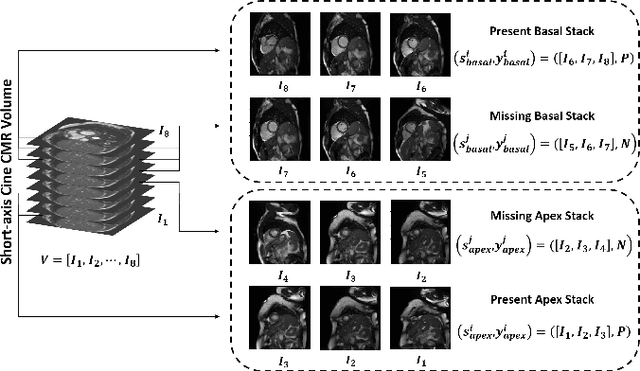

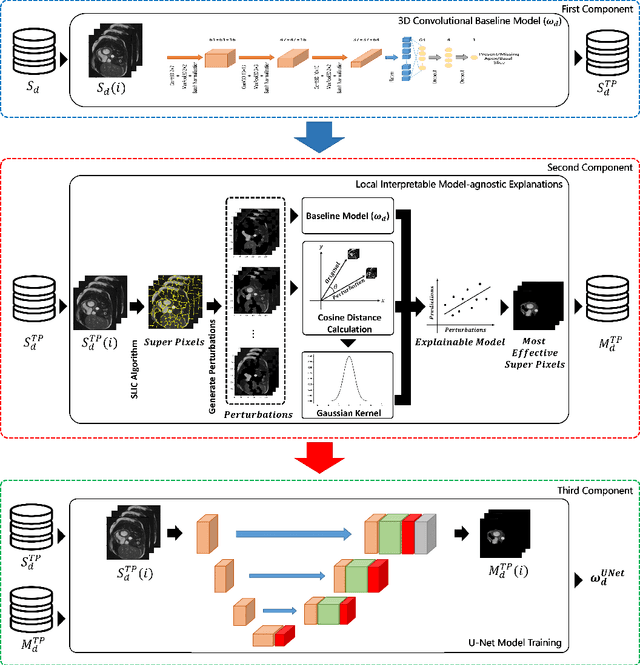
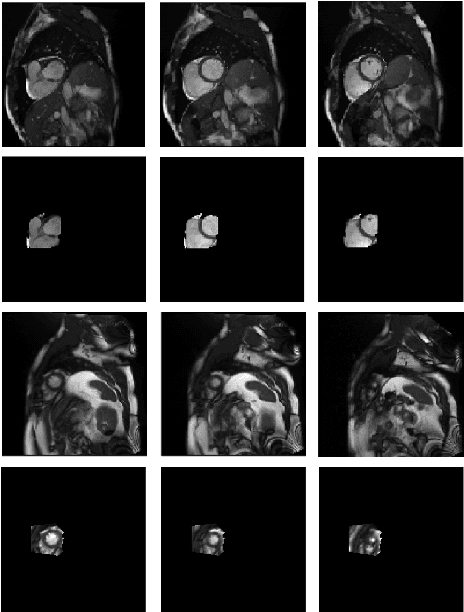
Abstract:Cardiovascular magnetic resonance (CMR) imaging has become a modality with superior power for the diagnosis and prognosis of cardiovascular diseases. One of the essential basic quality controls of CMR images is to investigate the complete cardiac coverage, which is necessary for the volumetric and functional assessment. This study examines the full cardiac coverage using a 3D convolutional model and then reduces the number of false predictions using an innovative salient region detection model. Salient regions are extracted from the short-axis cine CMR stacks using a three-step proposed algorithm. Combining the 3D CNN baseline model with the proposed salient region detection model provides a cascade detector that can reduce the number of false negatives of the baseline model. The results obtained on the images of over 6,200 participants of the UK Biobank population cohort study show the superiority of the proposed model over the previous state-of-the-art studies. The dataset is the largest regarding the number of participants to control the cardiac coverage. The accuracy of the baseline model in identifying the presence/absence of basal/apical slices is 96.25\% and 94.51\%, respectively, which increases to 96.88\% and 95.72\% after improving using the proposed salient region detection model. Using the salient region detection model by forcing the baseline model to focus on the most informative areas of the images can help the model correct misclassified samples' predictions. The proposed fully automated model's performance indicates that this model can be used in image quality control in population cohort datasets and also real-time post-imaging quality assessments.
Parkinson's Disease Diagnosis based on Gait Cycle Analysis Through an Interpretable Interval Type-2 Neuro-Fuzzy System
Sep 08, 2021


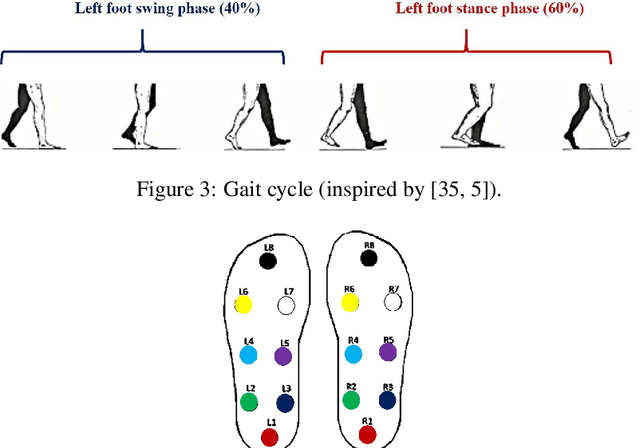
Abstract:In this paper, an interpretable classifier using an interval type-2 fuzzy neural network for detecting patients suffering from Parkinson's Disease (PD) based on analyzing the gait cycle is presented. The proposed method utilizes clinical features extracted from the vertical Ground Reaction Force (vGRF), measured by 16 wearable sensors placed in the soles of subjects' shoes and learns interpretable fuzzy rules. Therefore, experts can verify the decision made by the proposed method based on investigating the firing strength of interpretable fuzzy rules. Moreover, experts can utilize the extracted fuzzy rules for patient diagnosing or adjust them based on their knowledge. To improve the robustness of the proposed method against uncertainty and noisy sensor measurements, Interval Type-2 Fuzzy Logic is applied. To learn fuzzy rules, two paradigms are proposed: 1- A batch learning approach based on clustering available samples is applied to extract initial fuzzy rules, 2- A complementary online learning is proposed to improve the rule base encountering new labeled samples. The performance of the method is evaluated for classifying patients and healthy subjects in different conditions including the presence of noise or observing new instances. Moreover, the performance of the model is compared to some previous supervised and unsupervised machine learning approaches. The final Accuracy, Precision, Recall, and F1 Score of the proposed method are 88.74%, 89.41%, 95.10%, and 92.16%. Finally, the extracted fuzzy sets for each feature are reported.
Stochastic Substitute Training: A Gray-box Approach to Craft Adversarial Examples Against Gradient Obfuscation Defenses
Oct 23, 2018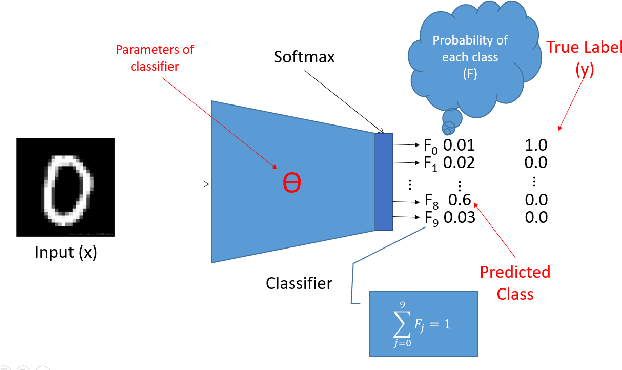

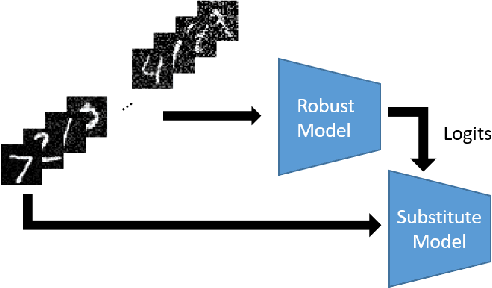
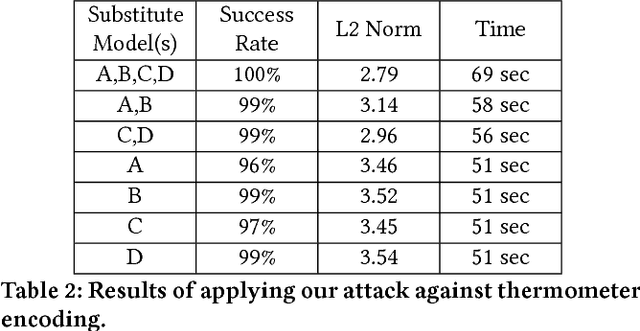
Abstract:It has been shown that adversaries can craft example inputs to neural networks which are similar to legitimate inputs but have been created to purposely cause the neural network to misclassify the input. These adversarial examples are crafted, for example, by calculating gradients of a carefully defined loss function with respect to the input. As a countermeasure, some researchers have tried to design robust models by blocking or obfuscating gradients, even in white-box settings. Another line of research proposes introducing a separate detector to attempt to detect adversarial examples. This approach also makes use of gradient obfuscation techniques, for example, to prevent the adversary from trying to fool the detector. In this paper, we introduce stochastic substitute training, a gray-box approach that can craft adversarial examples for defenses which obfuscate gradients. For those defenses that have tried to make models more robust, with our technique, an adversary can craft adversarial examples with no knowledge of the defense. For defenses that attempt to detect the adversarial examples, with our technique, an adversary only needs very limited information about the defense to craft adversarial examples. We demonstrate our technique by applying it against two defenses which make models more robust and two defenses which detect adversarial examples.
 Add to Chrome
Add to Chrome Add to Firefox
Add to Firefox Add to Edge
Add to Edge